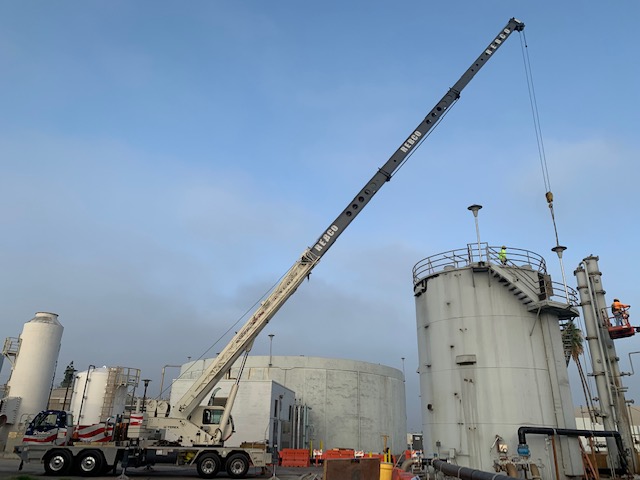Electrocution is still a common cause of death on job sites. It is unfortunate that the crane industry still experiences accidents, injuries, and deaths from heavy machinery lifting equipment getting too close or coming in contact with power lines. If your construction project also involves the use of cranes and overhead power lines in the way, here are some key tips to keep in mind to increase safety at your site.
- Increase Awareness about the Onsite Dangers of Electricity
The most important thing when working around power lines is awareness. It can be very helpful to put signboards to indicate where there is a danger of being electrocuted, and safety precautions must be taken. Take some time to properly inform all your workers at the construction site and also the crane rental provider that there are overhead power lines and they need to work around them.
All other personnel should stay away from the crane, ropes, and load at a safe distance because it might be possible that the ground around the crane could be energized.
2. Choose a Company with Experienced and Well-Trained Crane Operators
Most fatalities occurred when crane operators have little to no training in working around power lines. Crane operators and other workers who work around power lines should have a thorough understanding of OSHA regulations.
Hence, when a construction project involves overhead power lines, it is a must to choose a crane rental company with professionals who have in-depth job knowledge, extensive safety training, and sufficient experience. An experienced and trained crane operator always assumes that all power lines are energized (unless confirmed otherwise) and knows how to work safely around them.
3. Get Familiar with Clearance Distances
If overhead power lines have not been de-energized before beginning the construction and crane operation, it is important to identify the work zone in one of the following two ways:
- Demarcate boundaries with flags, a range-limit device, or a range-control warning device
- Define the work zone as 360 degrees around the equipment, up to the machine’s maximum working radius
Once the work zone is identified, it is also important to see if any part of the equipment could get closer than 20 feet to a power line within the determined work zone. If not, no further action is needed.
However, if heavy machinery lifting equipment could get within 20 feet of a power line, then you might need to de-energize and ground the power lines with the help of a power utility operator.
Do you need heavy machinery lifting equipment to work on a site where overhead power lines could get in the way? Connect with Rebco Crane & Rigging Service. We are a reputable crane rental company equipped with advanced and high-quality cranes and experienced and highly-trained crane operators. For more information, please get in touch with us now.

